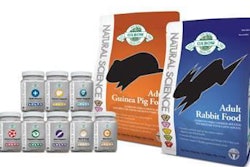The US and the UK share the distinction of being among the largest and most mature petfood markets globally. Unfortunately, they also share a problem that's becoming all too common in developed markets: pet obesity. How these various markets approach the issue makes for an interesting study.
Earlier this month, UK's Pet Food Manufacturers' Association (PFMA) released "Pet Obesity: Five Years On," an update to an initial report from five years ago. When it comes to UK pets, the picture does not look any better than it did then: Today three in four (77%) UK veterinarians believe pet obesity is on the rise, yet two in three (63%) UK pet owners say there are more important issues relevant to their pets than obesity. Further, while vets believe up to 45% of all pets they see are overweight (45% of dogs, 40% of cats, 28% of small animals and 15% of caged birds), again two in three (63%) pet owners say their pets are the correct weight.
These data mirror ones in the US from a study by the Association for Pet Obesity Prevention (APOP), released about a year ago and conducted in late 2012. It showed that while veterinarians included in the survey indicated 52.5% of US dogs are overweight or obese, and 58.3% of US cats fall into that category, about 45% of pet owners in the survey believed their pets had normal body weight.
The difference between the two markets -- and what I find intriguing -- is that in the UK, PFMA, as the voice of the petfood industry there, is taking the lead on trying to solve not only the obesity problem but also pet owners' awareness of it. This latest PFMA report includes recommendations and the announcement that in May, to engage pet owners emotionally and spread the word about ideal pet weight, PFMA will launch a campaign, #GetPetsFit.
This campaign would build on one launched by PFMA in early May last year, Weigh in Wednesday, which also aimed to address the gap between owners' perception of their pets' weight and the reality of it. About two months later, toward the end of June 2013, PFMA encouraged pet owners to take part in following months of Weigh in Wednesdays, "following on from the huge success" of the initial campaign that May.
I couldn't find any actual data as to how PFMA defined "huge success." Perhaps it really wasn't all that successful, which is why PFMA is trying this new #GetPetFits campaign this year.
Yet compare that approach with one in the US, which, well, doesn't really exist. While trade groups such as the Pet Food Institute and veterinary organizations like the American Veterinary Medical Association obviously care about pet obesity and track news and research on it, there is no real singular effort or program to tackle the issue. APOP is definitely trying to get the word out and does a good job promoting its survey results, but as a small organization, it likely doesn't have the resources to make the necessary impact. (Its website hasn't been updated since October 2013, and there's no word to date whether there will be an updated US survey released soon.)
Granted, the US is so much larger and more diverse than the UK -- as a country overall and as a petfood market -- that it may not be realistic to expect the same type of concerted industry effort. (And I don't think the new mandate for calorie content statements on US petfood labels that will soon go in effect counts, though I do believe it will help with pet owner education and awareness.) Yet without that singular effort, I fear US pets will just keep getting fatter.

















